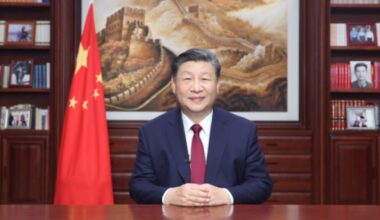In recent times, China’s economic trajectory has encountered a series of challenges that have reverberated on a global scale. This article delves into the complexities surrounding the current state of China’s economy, exploring the key factors contributing to its challenges and the implications on both domestic and international fronts.
Trade Tensions and Global Supply Chain Disruptions
One of the primary factors impacting China’s economic landscape is the ongoing trade tensions with major global players, most notably the United States. Trade disputes, tariff escalations, and geopolitical uncertainties have disrupted the global supply chain, affecting China’s exports and industrial production.
Slowdown in Economic Growth
China, once hailed for its rapid economic growth, is currently experiencing a slowdown. The double-digit growth rates of the past have given way to more moderate figures. Factors such as demographic shifts, a maturing economy, and structural challenges contribute to the deceleration in economic growth.
Debt Overhang and Financial Risks
China’s rapid economic expansion in the past was fueled, in part, by a surge in borrowing. The accumulation of debt, particularly in the corporate sector, has raised concerns about financial stability. Addressing the challenges of debt overhang and managing financial risks pose significant hurdles for the country’s economic policymakers.

Real Estate Market Concerns
The real estate market, a crucial driver of China’s economic growth, is showing signs of stress. Oversupply in certain regions, coupled with rising property prices, has led to concerns about a potential real estate bubble. The government’s efforts to balance the market and prevent a housing crisis add a layer of complexity to the economic landscape.
Demographic Challenges
China is grappling with demographic challenges, including an aging population and a shrinking workforce. The one-child policy, which was recently replaced by a two-child policy, has contributed to an imbalanced demographic structure. The aging population poses implications for pension systems, healthcare, and overall economic productivity.
Environmental Sustainability Pressures
China’s economic growth has come at a cost to the environment. The country is now under increasing pressure to address environmental concerns and transition towards a more sustainable model. Balancing economic development with environmental conservation is a delicate task that requires strategic policy initiatives.
Global Economic Headwinds
Beyond its borders, China is navigating through a complex global economic environment. The repercussions of events such as the COVID-19 pandemic, fluctuations in commodity prices, and uncertainties surrounding international trade agreements contribute to the challenges faced by the Chinese economy.
Government Policy Adjustments
Recognizing the multifaceted challenges, the Chinese government has implemented various policy adjustments to bolster economic resilience. This includes targeted stimulus measures, fiscal policy adjustments, and efforts to enhance domestic consumption. The effectiveness of these policies in mitigating economic challenges remains a critical factor.

Technological Competitiveness and Innovation
To navigate the economic challenges, China is placing a strong emphasis on technological innovation and competitiveness. The country is investing heavily in emerging technologies such as artificial intelligence, 5G, and renewable energy. Technological advancements are seen as key drivers for future economic growth.
Global Collaboration and Economic Diplomacy
In a world interconnected by trade and finance, China recognizes the importance of global collaboration. The country is actively engaged in economic diplomacy, fostering partnerships and collaborations to navigate challenges collectively. Building bridges with other nations and international organizations is a strategic approach to address economic complexities.
Navigating Uncertainties and Charting a Course Forward
China’s economic challenges are emblematic of a dynamic and evolving global landscape. The interplay of trade tensions, demographic shifts, environmental concerns, and internal structural adjustments presents a complex puzzle for policymakers. As China endeavors to overcome these challenges, the global community watches with interest, recognizing the impact of China’s economic trajectory on the broader world economy. In navigating uncertainties, strategic policy decisions, technological advancements, and global collaboration will play pivotal roles in shaping the future course of China’s economic landscape.










